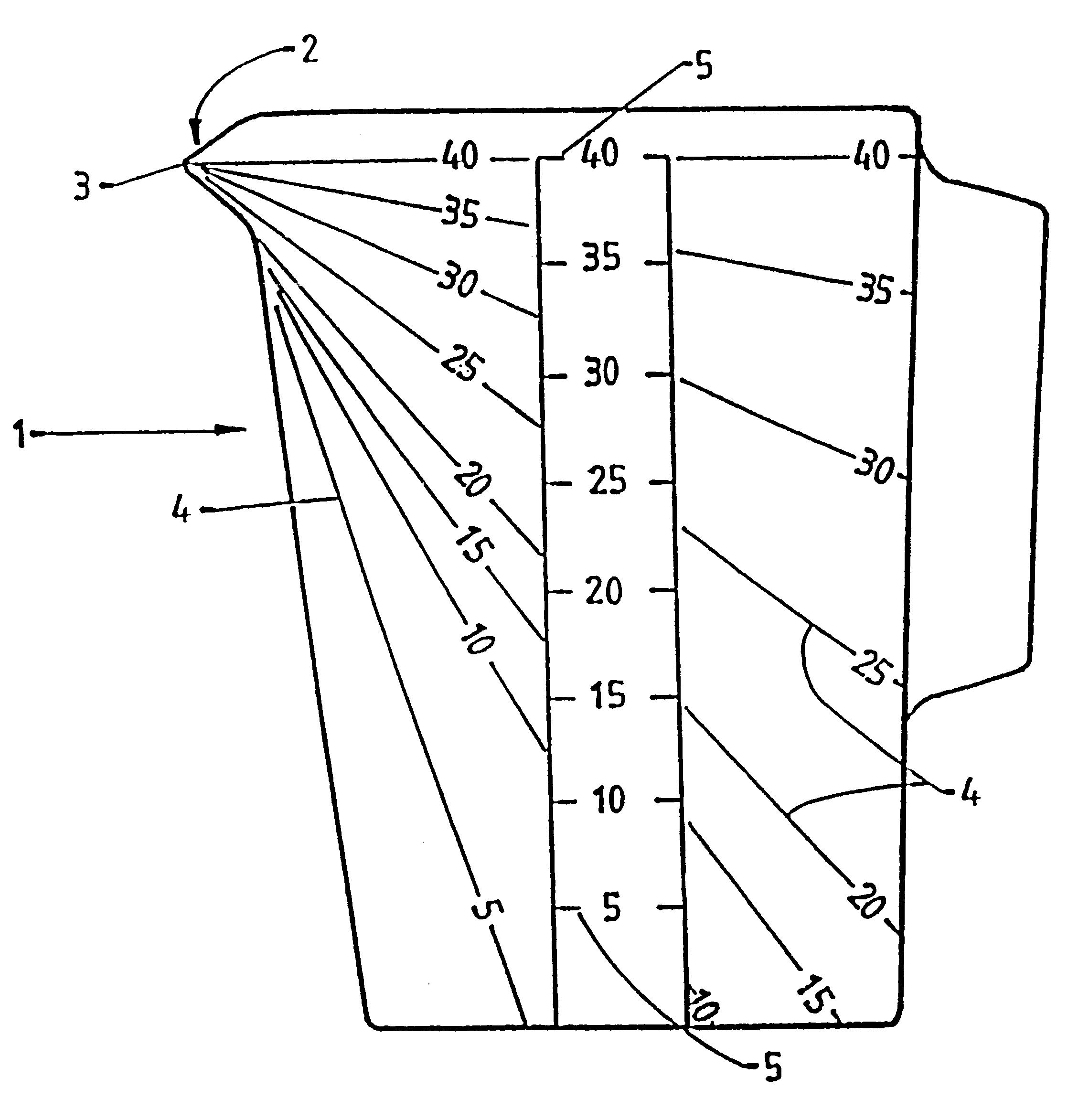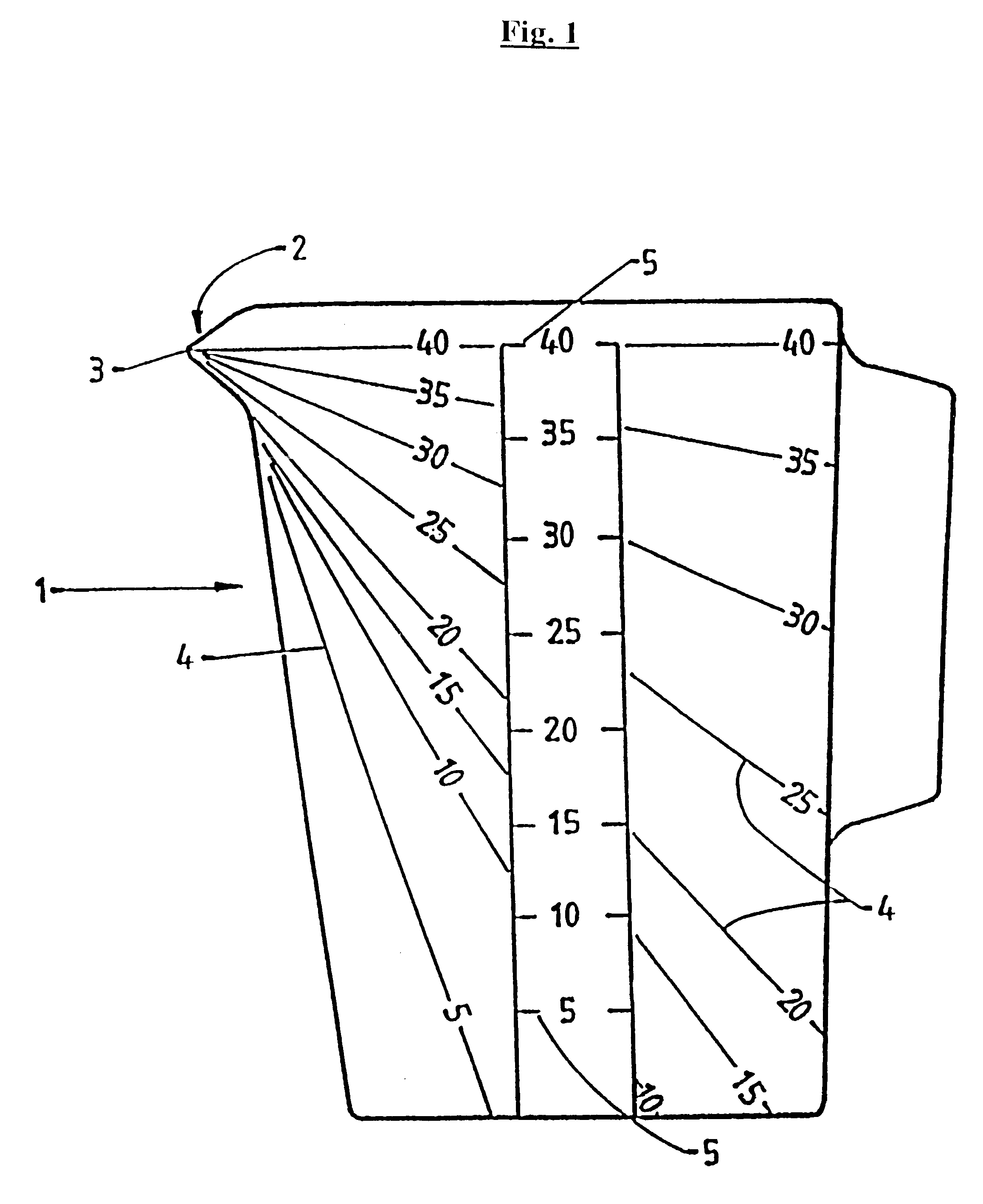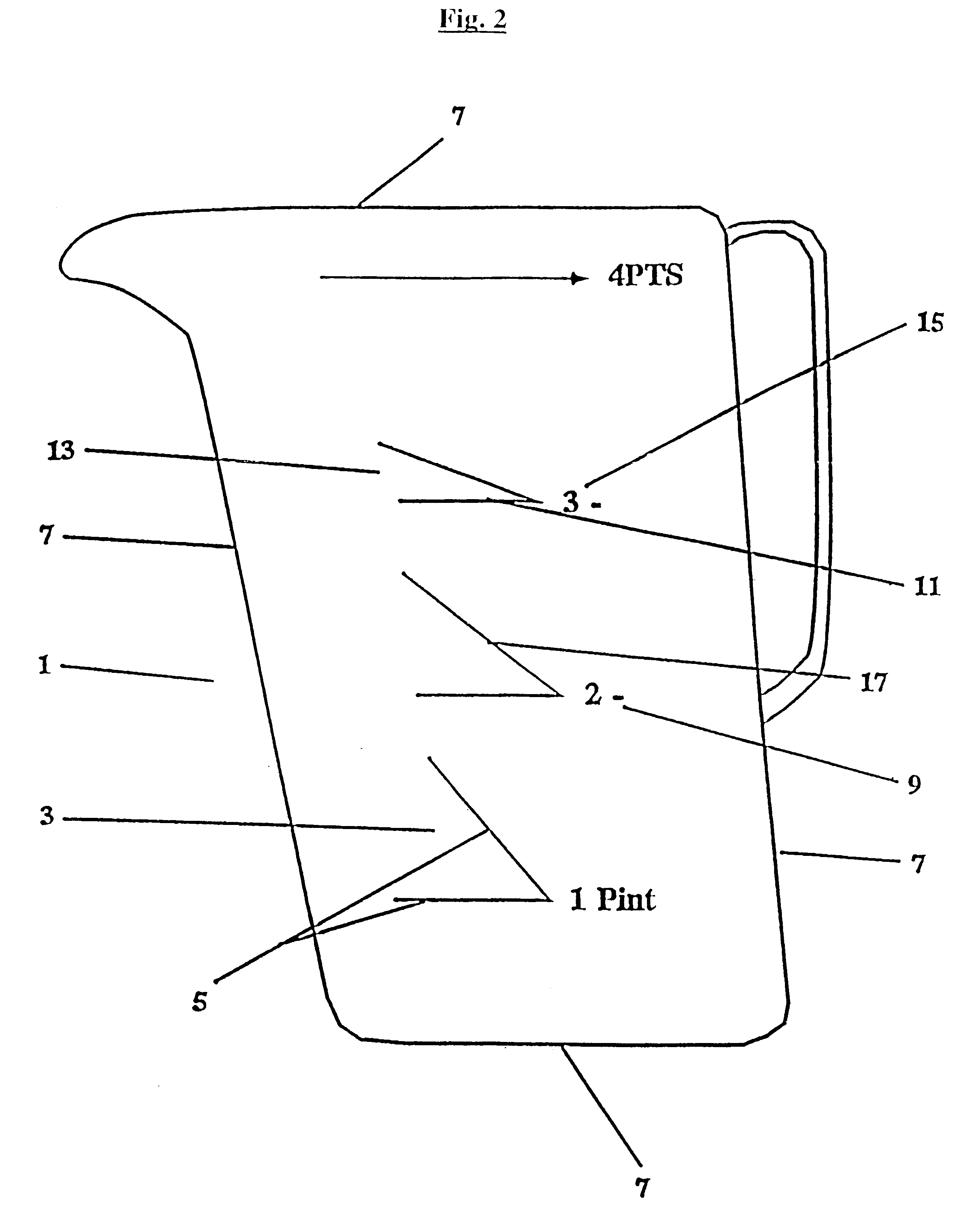Measuring receptacle having angled lines
a technology of receptacle and angled line, which is applied in the direction of measurement devices, instruments, and calibration of capacity, etc., can solve the problems of destroying the efficacy of a process, wasting time, and wasting resources, and achieves the effect of less time-consuming
- Summary
- Abstract
- Description
- Claims
- Application Information
AI Technical Summary
Benefits of technology
Problems solved by technology
Method used
Image
Examples
Embodiment Construction
The jug illustrated in FIG. 1 shows the closest prior art and is included to highlight the advantages of the present invention thereover.
Referring to FIG. 2, the receptacle holding fluid is represented by a measuring jug 1. A set of fluid level indicators 3 consists of the two markings, being the lines 5. The lines 5 do not extend to the visual perimeters 7 of the measuring jug 1.
In this embodiment, the three sets of fluid level indicators also have a volume indicator eg a volume of two pints is represented by 9 placed at the convergence of the lines 5.
It can be clearly seen that the indicators on the jug in FIG. 2 are less cluttered and gives greater visual acuity than the jug in FIG. 1.
In use, an operator will fill the measuring jug 1 with liquid to a certain level. For example, if it is wished to dispense a pint of liquid a user may fill the jug 1 until the surface of the fluid corresponds with the level represented by the horizontal filling line 11 in the set of markings 13 havi...
PUM
 Login to View More
Login to View More Abstract
Description
Claims
Application Information
 Login to View More
Login to View More - R&D
- Intellectual Property
- Life Sciences
- Materials
- Tech Scout
- Unparalleled Data Quality
- Higher Quality Content
- 60% Fewer Hallucinations
Browse by: Latest US Patents, China's latest patents, Technical Efficacy Thesaurus, Application Domain, Technology Topic, Popular Technical Reports.
© 2025 PatSnap. All rights reserved.Legal|Privacy policy|Modern Slavery Act Transparency Statement|Sitemap|About US| Contact US: help@patsnap.com



